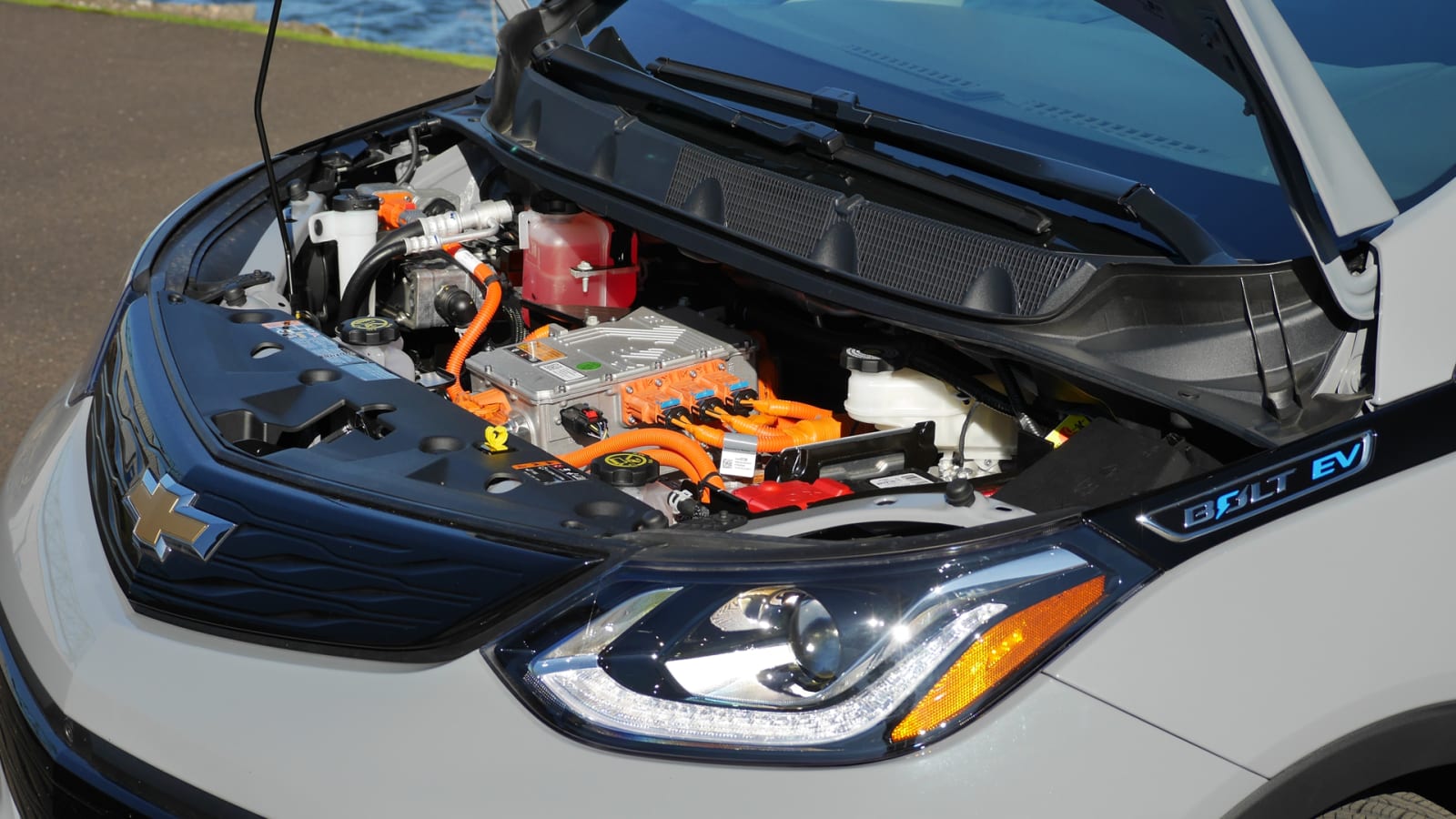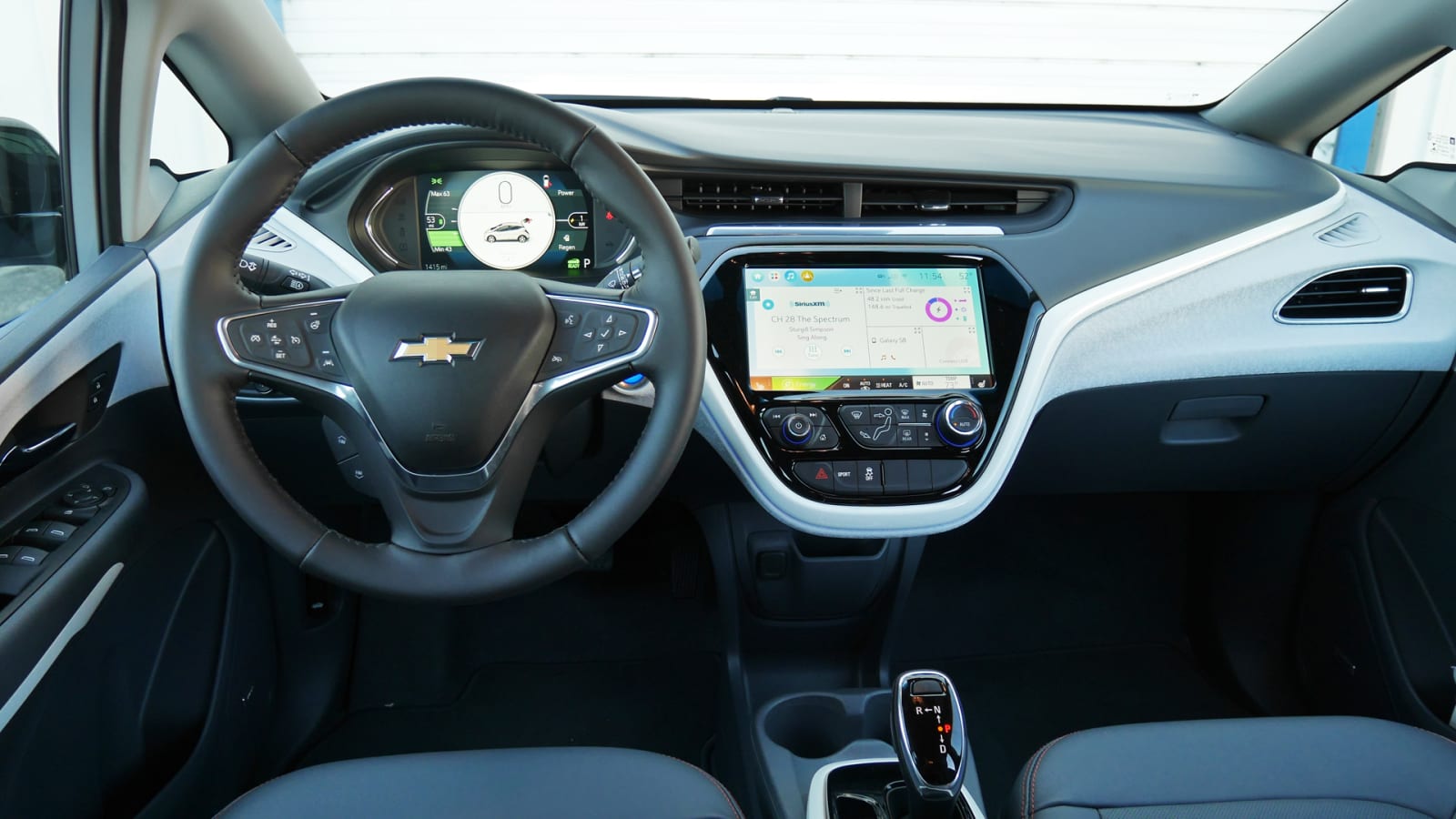2020 Chevrolet Bolt EV First Drive | Stretching its legs
https://ift.tt/31bLwk3
PORTLAND, Ore. — Changes are few in number for the 2020 Chevrolet Bolt EV, but significant in importance. Chief among them is a 21-mile increase in range that brings its total to 259 miles – a number better than any non-luxury electric vehicle. There are also enhancements to its DC fast-charging capability that result in as much as 100 miles of range being added back within 30 minutes of charging (previously 90 miles) as well as improved recharging performance in colder temperatures.
We were given an ample chance to test both of those improvements. Starting with a full charge in Tacoma, Wash., we would drive out to the Pacific Coast then head south to Astoria, Ore., and on to Portland. That distance equals exactly 238 miles, which definitely would’ve had us biting our nails in last year’s 238-mile Bolt. In theory, then, that extra 21 miles makes all the difference in the world.
Alas, electricity is not the same as gasoline, and battery life is susceptible to cooler temperatures. The in-car range meter is therefore showing 199 miles at the start with temperatures in Tacoma hovering unseasonably around 40 degrees and then dropping further as we head toward the coast. Driving like a grandma and keeping the HVAC off would not be enough. An optional DC fast charge along the route suddenly becomes a mandatory one.
Before that, however, the 2020 Bolt EV proves that it can still impress despite several years on the market and multiple new competitors. You sit high, and visibility is exceptional, bolstered for 2020 with improved resolution for the standard rearview camera, as well as the optional 360-degree parking camera system and GM’s second-generation rearview camera mirror. Stuck in traffic on I-5 through Tacoma (as one always is), the Bolt allows for aggressive regenerative braking and therefore one-pedal driving by selecting L with the obtuse electronic shifter. Besides making for a more pleasant commuting life, it’s also the best way to save and regenerate electricity.



The battery pack now stores 66 kWh, up from 60, but according to battery cell technical specialist YoungNam Kim, that’s the result of rejiggering the ratio of lithium, manganese, cobalt and nickel within each cell. The pack’s overall dimensions and weight are the same, as is its positioning at the bottom of the chassis, which results in a solid, buttoned-down feel atypical for cars its size. The Bolt is still tall and notably narrow (you will bump elbows with your passenger), so it’s a bit gangly in feel and hardly an electric hot hatch. The novocaine steering certainly doesn’t help on that front, either.
It is uproariously quick, though, rocketing to 60 mph in 6.5 seconds. To be fair, that’s basically the same as a Hyundai Kona EV, but the Bolt’s rapidity still takes you by surprise – not to mention your passengers and any surrounding motorists not expecting the dorky hatchback next door to blast away. We easily passed a semi on a two-lane road without putting the pedal to the floor – a similarly sized hatchback or crossover would’ve required a hefty foot plant and resulted in an odious amount of noise.
The Bolt’s powertrain is, of course, as whisper quiet as any EV’s, but for 2020, Chevy enhanced the artificial noise system designed to warn pedestrians of its presence at low speeds. There is now a speaker at the rear as well as one at the front, and the sound itself has been changed to “a more tonal noise,” in the words of engineering manager Rob Mantinan. He noted the old one was a less noticeable white noise, yet there were also efforts made to tune the system so that it wouldn’t be intrusive while driving. We couldn’t really hear it inside the cabin, yet it was certainly noticeable while it was slowly maneuvering back and forth during our photo shoot.

In those photos, you might struggle to see any difference between the 2020 Bolt and last year’s model. Indeed, we had to ask someone, as side-by-side pictures sure didn’t help. The glossy black grille pieces may look the same from afar, but when you look closer, the pattern is now textured rather than just being a flat graphical element. Wow. The more significant difference is therefore the pair of new colors: Oasis Blue and Cayenne Orange. The car you see above is the handsome Slate Gray Metallic.
The interior remains the same, meaning you’re still surrounded by endless hard, gray plastic. The textured white plastic on the dash continues to spruce things up a bit, but there’s just something about it that’s reminiscent of a hot tub. The Bolt’s distinctive touchscreen is also the same – huge and well-placed, but perhaps not as user friendly as Chevy’s regular system. The special electric efficiency charts and graphs may be interesting to those who happily geek out on such things, but they sure seem distracting.
It would probably be a good thing, then, if Chevrolet made forward collision warning with automatic emergency braking and pedestrian detection standard. Instead, it’s part of the $495 Driver Confidence II package, along with lane-keeping assist and automatic headlights, available on both trims. However, in order to get that, you also have to get the Comfort and Convenience package, which means the actual extra cost is $1,050. These safety systems come standard on the Hyundai Kona EV and Kia Niro EV, which for 2019 at least, were priced similarly to the Bolt.



The 2020 Bolt starts at $37,495, including destination, which is exactly the same as it was for 2019. The loaded Premier trim level we tested would likely sticker for just less than $43,735, which includes $750 for fast-charging capability. That seems like an absolute necessity, especially if you plan on taking your Bolt beyond city limits and double especially if you plan on driving in colder temperatures.
With our remaining range bound to fall well short of reaching Portland, we made a stop at a fast-charging station in Kelso, Wash. Located in a mall parking lot about a half-mile from Interstate 5, the Electrify America “station” had six stalls – one of which was malfunctioning, another being used by a nice man in a Volkswagen e-Golf. The Bolt began to fastly charge, ultimately gaining the miles we needed. However, even if we had stayed long enough to get that promised 100 miles after 30 minutes, that’s still 30 minutes of sitting around in a mall parking lot. It wasn’t even a nice mall.
This is ultimately the situation that will continue to make longer-distance travel in an electric car frustrating, regardless of non-Tesla infrastructure continuing to expand. There will be those who will always balk at the time needed to refuel relative to gasoline, and the temperature-related issues we experienced aren’t going away, either. That said, Tacoma and Portland are only 143 miles apart. If we had made it a straight shot rather than taking the scenic route, the Bolt would’ve made it with a comfortable 56 miles to spare, and those 21 extra miles certainly assuaging range anxiety. So while rambling isn’t exactly the Bolt’s forte, intercity road trips are well within its wheelhouse.
Related Video:
Auto Blog
via Autoblog https://ift.tt/1afPJWx
October 14, 2019 at 09:31AM